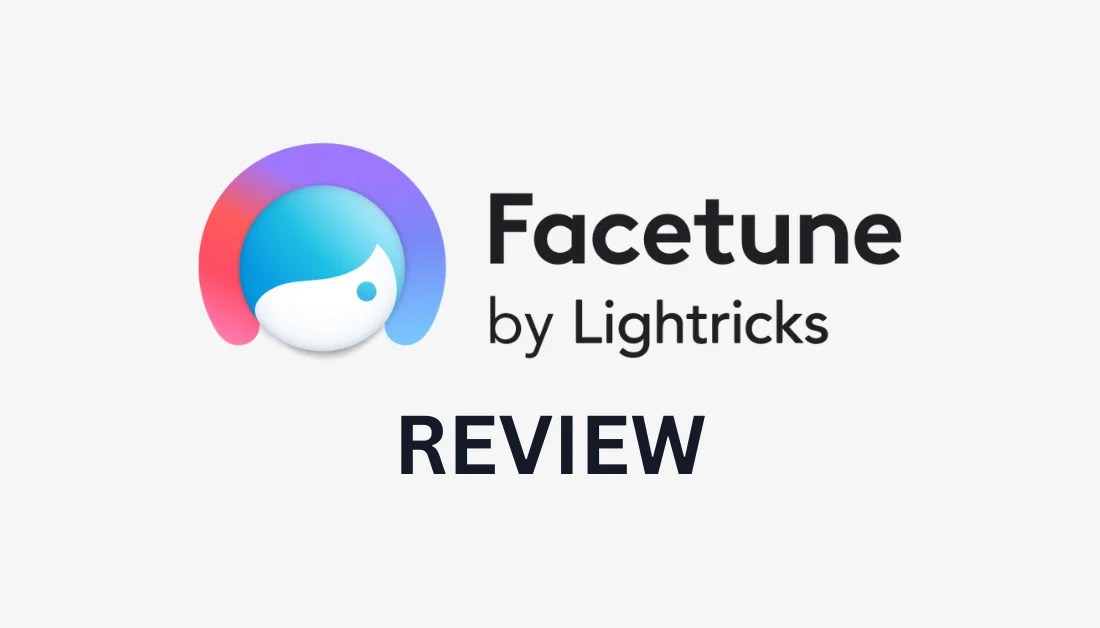
Unite.AI is committed to rigorous editorial standards. We may receive compensation when you click on links to products we review. Please view our affiliate disclosure.

As a big ChatGPT fan, I’ve gotten used to its intuitive responses and knack for tackling various tasks. But lately, I’ve been hearing more and more about Claude AI by Anthropic. Both products use artificial intelligence and some of the most advanced Large Language Models (LLM) available today.
Is Claude AI worth the hype or just another fleeting AI trend? Is it better than ChatGPT? I had to try it and see for myself!
In this Claude AI review, I’ll discuss what it is, who it’s best for, and its key features. Then, I’ll show you how I used Claude AI to generate responses and create a unique tone of voice using Projects! I’ll also compare Claude 3.5 Sonnet to ChatGPT 4o mini to see how they compare.
I’ll finish the article by comparing Claude AI with my top three Claude AI alternatives (ChatGPT, Perplexity AI, and Google Gemini). The goal is that by the end, you’ll know if Claude AI is right for you! Let’s take a look.
Verdict
Claude AI is a versatile tool for summarization, code generation, image understanding, and creative writing. Its free, Pro, and Team versions make it accessible to anyone on any budget! While it lacks real-time updates, image generation, and Internet connectivity, its unique Projects feature allows you to organize documents, code, and place files into themed collections for easy reference.
Pros and Cons
- Claude AI excels in summarization, question answering, code generation, and creative writing.
- It offers a generous free tier and a Pro version with additional features for $20 per month.
- The platform is user-friendly, with an intuitive design and natural conversational abilities.
- Claude AI enhances accuracy and efficiency through smart reasoning and real-time code creation.
- It supports multiple languages, making it accessible to a global audience.
- Strong security measures, including encryption and regular updates, ensure data safety and privacy.
- The platform prioritizes ethical AI practices and user safety, fostering a secure and trustworthy environment.
- The Projects feature organizes your documents, code, and files into themed collections for easy reference.
- An API that easily integrates into your existing systems.
- Claude AI relies on its training data, so it may lack the latest information.
- The AI might reflect biases present in its training data.
- Disconnected from the Internet.
- It cannot generate images.
What is Claude AI?

Claude is a versatile AI assistant developed by Anthropic that is designed to support individual and team workflows. It excels in a couple of primary areas:
- Advanced reasoning: Claude handles complex tasks beyond recognizing patterns or generating text.
- Vision analysis: Claude can read and analyze almost any image, including handwritten notes, graphs, and photos.
- Code generation: You can use Claude to build websites with HTML and CSS, convert images into structured data, or fix complicated code.
- Multilingual processing: Claude translates languages in real time, helps with grammar practice, and creates content in multiple languages.
Claude offers high performance and speed through its various models:
- Haiku (light and fast): Claude’s fastest model that effortlessly handles lightweight tasks with impressive speed.
- Sonnet (hard-working): The perfect balance between performance and speed for task efficiency.
- Opus (powerful): Claude’s top-performing model to easily tackle complex analysis, lengthy tasks, and advanced math and coding.
They also introduced their newest model (Claude 3.5 Sonnet), delivering top performance and affordability for handling large-scale tasks quickly.
Claude also focuses on security, reliability, and accuracy for handling complex tasks and large volumes of work. Its API easily integrates into your existing systems, offering a range of features to boost productivity and teamwork.
Whether tackling intricate projects or coordinating with a team, Claude helps streamline your workflow and improves efficiency!
Who Is Claude AI Best For?
Anyone can use Claude AI for a variety of different things. However, certain types of people benefit from Claude AI the most:
- Developers can use Claude AI to enhance their projects with real-time code generation rather than manually writing it. Claude excels in Python but is proficient in all major programming languages. For example, developers can quickly generate HTML for a new website or debug code in multiple programming languages.
- Translators can use Claude AI’s multilingual capabilities to speed up and improve language translation accuracy. For example, they can accurately translate complex legal documents between English and Chinese.
- Language learners can also use Claude AI to improve their language skills. For example, they can get real-time feedback on various languages to enhance their vocabulary. You can learn a wide range of languages with Claude, including but not limited to English, French, German, Portuguese, Spanish, Japanese, Italian, Mandarin, Russian, Arabic, Hindi, and Korean.
- Writers can use Claude AI to streamline content creation by automating brainstorming, outlining, and writing to increase productivity. For example, a writer can use Claude AI to generate a detailed blog post outline and draft sections while receiving grammar and style suggestions for a polished final edit.
- Researchers and data analysts can use Claude AI to simplify data processing and enhance workflow. For example, they can analyze large datasets to identify patterns instantly.
- Business owners can use Claude AI to optimize operations and enhance customer interactions. They can automate tasks like data analysis, content creation, and real-time translation. For example, they can use Claude AI to generate customer support responses in multiple languages and analyze operational data for actionable insights.
- With its advanced reasoning, vision analysis, and multilingual features, teams can use Claude to boost collaboration and efficiency. For example, they can simplify project management by analyzing data, translating communications, and generating real-time code. Claude even has a “Team” plan with higher usage limits and the ability for team members to share their chats.
- Anyone can use Claude AI to simplify daily tasks, boost productivity, and help with writing, learning, research, and business processes. For example, you can use Claude to write a draft for a novel or get assistance in learning a new language.
7 Key Features That Set Claude AI Apart
Here are the key features that set Claude apart from other AI assistants. I’ve added examples to put things into context for a deeper understanding:
- Advanced Reasoning: Claude AI tackles challenging problems with solid logic and decision-making skills. It uses advanced NLP (Natural Language Processing) models to understand human language, making it a favorite among developers and researchers for handling complicated tasks. For example, it can analyze complex business scenarios, such as optimizing global supply chains to reduce costs and improve delivery times.
- Vision Analysis: Claude AI’s advanced technology accurately interprets images and videos. Its sophisticated algorithms and deep learning capabilities enable it to recognize objects and understand scenes, making it valuable for various visual analysis tasks. For example, it can transcribe handwritten notes from an image.
- Real-time Code Generation: Claude AI quickly generates and modifies code, boosting development speed and accuracy. Its powerful language models simplify complex coding tasks, making it an excellent tool for developers and businesses needing efficient and customizable coding solutions. For example, it can quickly generate HTML code for a new webpage rather than doing it manually.
- Multilingual Processing: Claude AI effortlessly translates multiple languages for smooth communication. It supports various linguistic needs, making it a valuable tool for global interactions. For example, it can translate a conversation between English and Spanish in real time or assist with multilingual customer support.
- Model Variants: Claude AI provides various model options, each equipped with the latest AI technology to suit different needs. This variety of options ensures you select the best model for your tasks, demonstrating Claude AI’s commitment to innovation and user-focused design. For example, you can choose Claude’s Sonnet model for high-speed tasks or the Opus model for more detailed analysis.
- Security & Reliability: Claude AI prioritizes user security and data privacy with advanced protection features. It ensures safe interactions and keeps user data secure, setting a high standard for security in the AI industry. For example, it ensures that sensitive data is encrypted and interactions are protected against unauthorized access.
- Projects: Projects help you use Claude with your own information, like style guides or previous work. Create a project, upload internal knowledge, generate custom instructions, and collaborate with team members. This extra context lets Claude assist with various tasks, whether crafting emails to sound like your marketing team or writing SQL queries like a data analyst!
How to Use Claude AI
Here’s how I used Claude AI to generate responses and create a unique tone of voice using Projects. I also compare how Claude 3.5 Sonnet compares to ChatGPT 4o mini:
- Create a Claude AI Account
- Upgrade to Pro
- Give Claude AI a Text Prompt
- Create a Project
- Set Custom Instructions
- Give the Project a Text Prompt
Step 1: Create a Claude AI Account

I started by going to anthropic.com and selecting “Talk to Claude.”
After making my account, Claude AI welcomed me to the platform and asked me for my name.
Claude AI then discussed a few important things to remember when using it, such as its usage policy and the possibility of generating incorrect or misleading information. They also provide detailed documentation to help with the integration process.
From the start, I could tell that Claude AI was very transparent with its users, and I appreciated its openness before I started using the software. I hit “Let’s Begin” to get started!
Immediately, Claude AI took me to the Claude AI chatbot, where I could get Claude to help me with various tasks. Some common ways people use Claude include:
- Summarizing long documents and articles.
- Writing various types of creative content.
- Generating and debugging code in various programming languages.
- Translating languages and complex documents.
- Improving language skills with real-time feedback.
- Streamlining content creation by automating brainstorming, outlining, and editing.
- Analyzing large datasets to identify patterns.
- Simplifying daily tasks and boosting productivity.
- Providing valuable answers to your questions.
After creating an account, I was automatically put on Claude’s free plan, limited to the Claude 3 Haiku model. It’s Claude AI’s fastest model and is excellent for executing lightweight actions quickly.
Step 2: Upgrade to Pro
I wanted to try Claude AI’s newest and most powerful model (Claude 3.5 Sonnet). The only way to access it was to upgrade my account, which I did by going to “Upgrade” at the top.

After upgrading to Claude’s Pro plan, I noticed I had access to more features:
- I now had access to three different AI models rather than just Claude 3 Haiku on the free plan: Claude 3.5 Sonnet (most intelligent), Claude 3 Opus (great for writing and completing tasks), and Claude 3 Haiku (the fastest model for daily tasks).
- I now had a Projects tab in the left panel where I could create projects and upload internal knowledge.
It was time to put Claude AI to the test!
Step 3: Give Claude AI a Text Prompt

I started by inserting my text prompt: “Explain the impact of climate change on global agriculture and suggest three practical solutions for mitigating these effects.” This prompt will evaluate Claude’s ability to handle complex reasoning, provide detailed insights, and offer practical recommendations.
I made sure the selected model was Claude 3.5 Sonnet and hit Enter!

Within seconds, it gave me a solid response covering exactly what I’d asked!

I gave ChatGPT 4o mini the exact same text prompt to compare the two platforms.
Claude AI and ChatGPT gave solid advice with similar outputs. However, I noticed that ChatGPT gave a longer response with better formatting.
Step 4: Create a Project

Next, I wanted to create a project in Claude AI to change my tone of voice. To do this, I went to the left panel and selected “Projects.”

I went to “Create Project” on the top right.
The Projects feature in Claude AI is probably my favorite feature. It helps me organize my work and use knowledge from various conversations. By uploading documents, code, and files, I can create themed collections that Claude can refer to repeatedly.

I wanted to have some fun and create a project containing a tone of voice that sounded like Gandalf from Lord of the Rings. I named it “Gandalf” with the description, “A wise, mystical, and authoritative tone,” and hit “Create Project.”
Step 5: Set Custom Instructions

Claude AI created my project immediately! Since I had no PDFs, documents, or other text to upload, I selected “Set Custom Instructions.”

Selecting the custom instructions option opened a new window where I could give Claude some instructions on how it should respond. I kept things simple and told it to “Use a wise, mystical, and authoritative tone.” I hit “Save Instructions.”
Step 6: Give the Project a Text Prompt

I typed in the same prompt I used earlier (“Explain the impact of climate change on global agriculture and suggest three practical solutions for mitigating these effects.”) and hit Enter.

Claude AI generated a solid response, which I could easily imagine Gandalf from Lord of the Rings saying these words! Claude AI does an excellent job of generating unique voices without much effort. I can now access this tone of voice whenever I need it when using Claude!
Overall, Claude AI impressed me with its transparency and ease of use. After upgrading to the Pro plan, I could access multiple models, including the advanced Claude 3.5 Sonnet, which provided detailed responses. Claude AI also helped me create a unique tone of voice I could use whenever I wanted!




